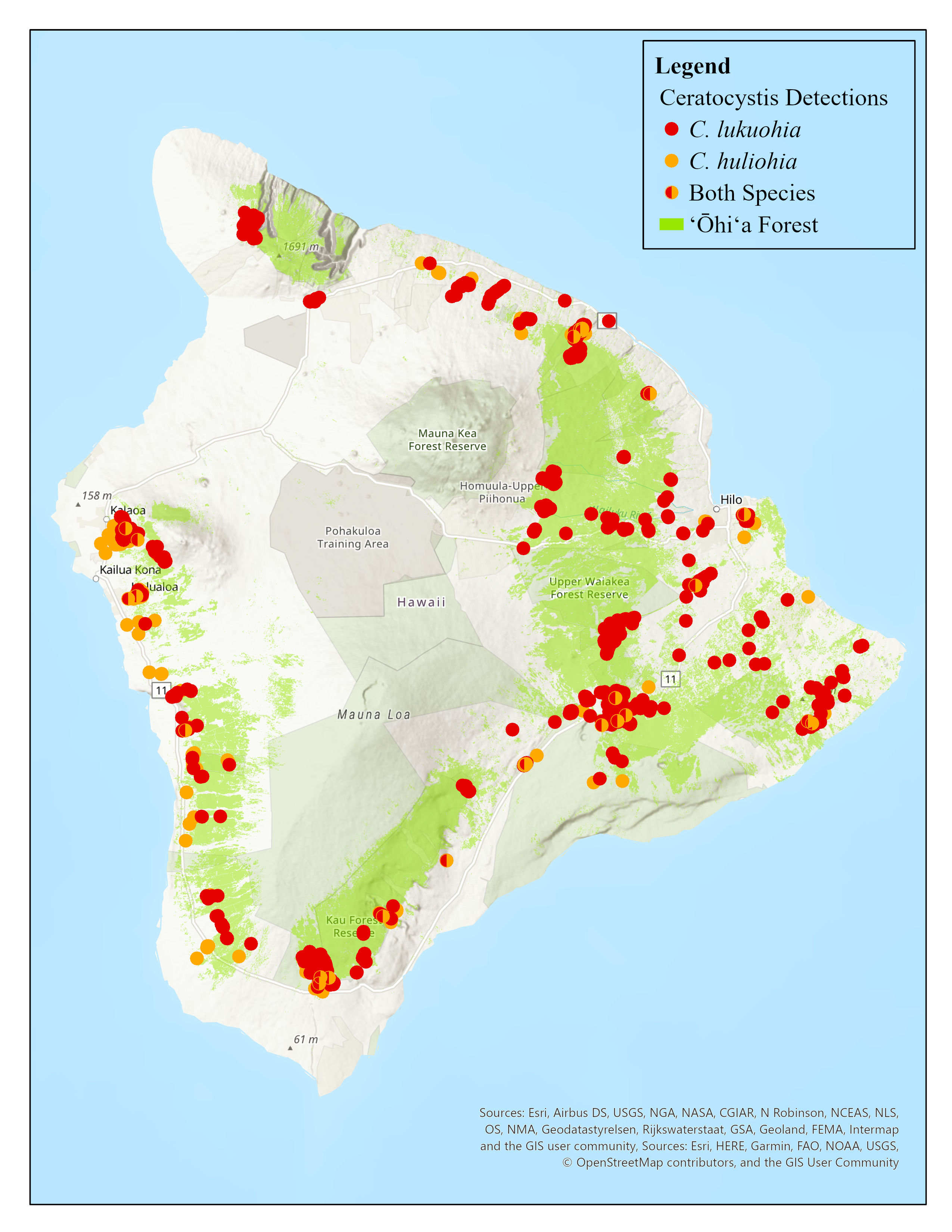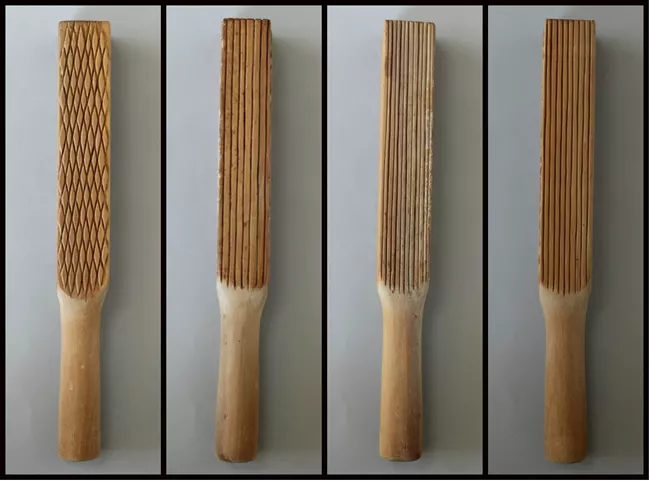Overview of Rapid 'Ohi'a Death (ROD)
What is ROD?
Credit: Dr. Ryan Perroy
 Credit: University of Hawaii at Manoa College of Tropical Agriculture and Human Resources
Credit: University of Hawaii at Manoa College of Tropical Agriculture and Human Resources
ROD is a phenomenon that was discovered on Hawaii Island in 2014, where the trees suddenly experienced a high mortality rate. It was named Rapid 'Ōhi'a Death due to the rapid, synchronized death of the leaves on the branches that quickly spreads throughout an entire canopy. The disease itself is a fungal disease of the Ceratocystis genus that is introduced to the tree via an external wound.
The symptoms of ROD include:
- Fading crown
- Sudden browning of leaves
- Retention of leaves
- Redish-black spots within the cross section of the tree
- Discoloration of sapwood
Once the tree is infected with ROD, there are four different stages of the disease, which can be identified by the color of the leaves. The first stage is the chlorotic stage, where the leaves turn yellow and can last for, on average, 38 days. The second stage is the red stage, where the leaves turn red and can last for, on average, 57 days. The third stage is the brown stage, where the leaves turn brown and can last for, on average, 86 days. The final stage before the death of the tree is the bleached stage, where the leaves lighten to a grayish white and can last for 365 days or longer.
ROD is most commonly spread via:
- Frass produced from ambrosia beetles, carried by the wind
- Introduction of infected trees
- Transference from transportation of infected logs
- Transference from improperly cleaned tools
- Hooves from feral animals (Cattle, pig, goat, sheep)
ROD is most commonly found on Hawaii island, with a single case reported on Maui island and a few on the islands of Oahu and Kauai. On Hawaii Island, ROD has been found in areas such as Kīpukapuaulu, ‘Āinahou, and Chain of Craters Road near Ko‘oko‘olau Crater.
Why is 'Ohi'a important?
'Ōhi'a trees are an important part of the Hawaiian ecosystem, as they comprise 80% of the state’s native forests and 50% of all forests in the state. The trees also protect the upper watersheds of these forests, in addition to serving as a home for endemic flora and fauna.
Culturally, there are many differing stories behind the creation and representation of 'ōhi'a trees. In a few versions, the trees themselves are considered to be the physical manifestation of many different Hawaiian gods and goddesses, with one example being Kū, the Hawaiian god of war, politics, farming, and fishing. The most well-known and modern story of the creation of 'ōhi'a is a story of two lovers and the jealousy of the Hawaiian goddess of fire and volcanism, Pele. In this story, Pele fell in love with a man named 'Ōhi'a, who was in turn in love with a woman named Lehua. Jealous of Lehua, Pele turned 'Ōhi'a into a tree. After learning about 'Ōhi'a’s fate, Lehua asked her ‘aumakua (deified family ancestors) to intervene, where they transformed her into the flowers that blossom on the tree so that they could forever be together. To this day, many say that picking the tree’s flower will cause it to rain due to the two lovers being separated.
Other than the mythology behind the trees and flowers, the tree’s wood was used to carve the traditional statues, known as ki’i. The wood was also used to create kapa beaters, poi boards, and various weapons, and the leaves were used to create medicinal tea. The flowers from the tree are used to create the garlands worn by hula dancers, each composed of yellow, red, and orange 'ōhi'a flowers.
Lastly, economically, the wood from 'ōhi'a trees can be used in a variety of ways, with posts and flooring being a couple of examples. The loss of the trees will also impact Hawaii’s economy, as the loss of the trees will lead to a lack of freshwater due to overdrawing of watersheds, loss of tourism, and/or having to establish expensive captive breeding programs to ensure the survival of native endangered species that have their habitats in the trees.
How to prevent the spread of ROD
There are many things you can do to prevent the spread of ROD in Hawaii, whether you are just the average hiker/camper or a professional logger/miller. You can prevent the spread of ROD by doing the following:

References:
Origin story of 'ōhi'a treesAcademic journal on ROD & 'ōhi'a
Uses of 'ōhi'a wood and flowers
Preventing the spread of ROD

